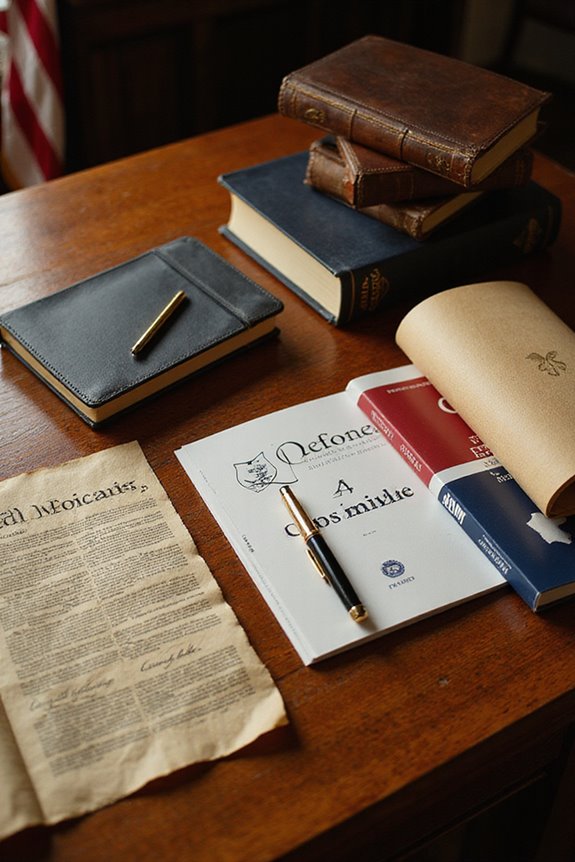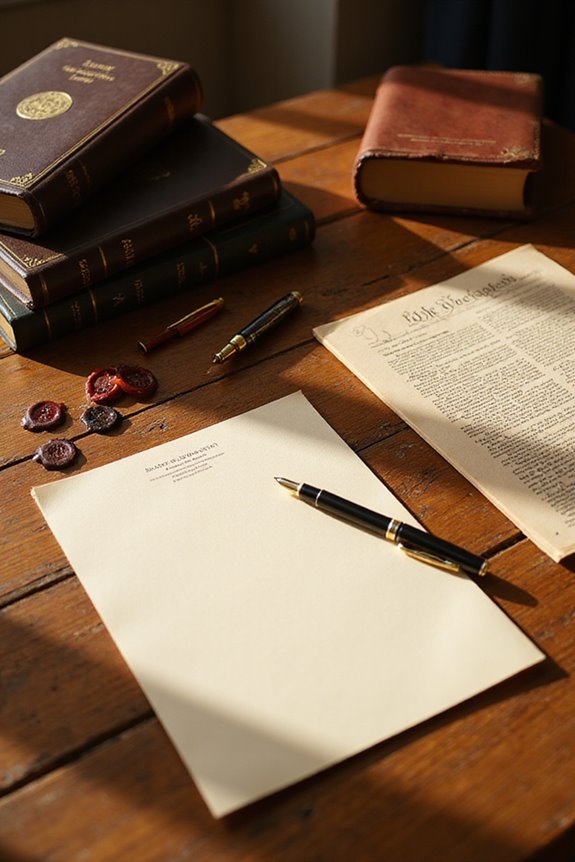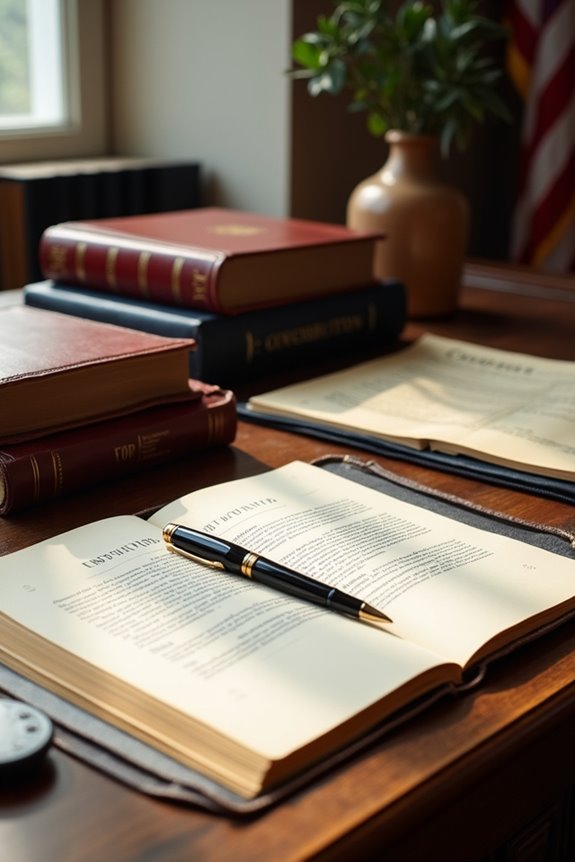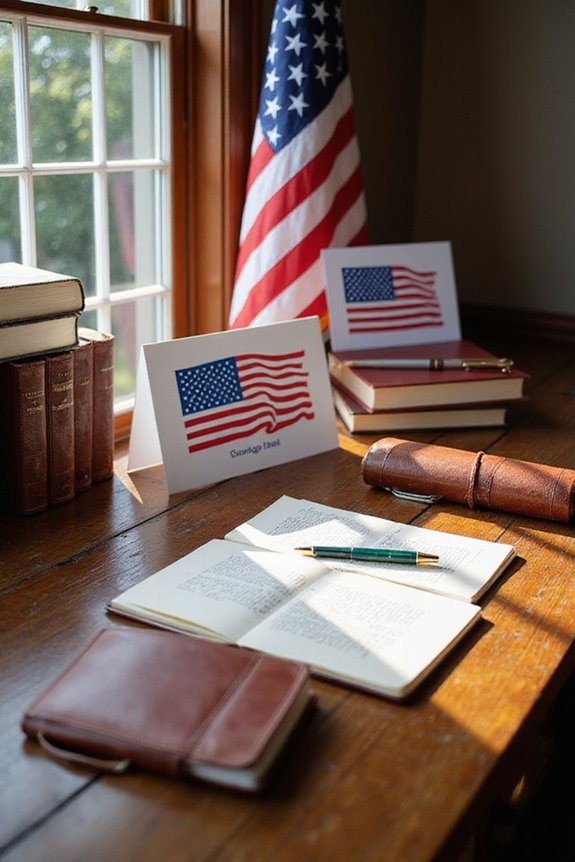When designing political brochures, we should focus on key principles for maximum impact. Effective designs feature:
- Simple, clean layouts that enhance readability.
- Strong visuals and professional imagery for credibility.
- Clear, direct messaging with bullet points for easier digestion.
- Purposeful use of white space to balance text.
- Consistent branding to reinforce identity.
By adhering to these elements, we engage voters effectively and convey our core messages. Additional insights are available for those interested in refining their approach.
Key Takeaways
- Utilize simple and clean layouts to enhance readability and quickly convey the main message of the campaign.
- Incorporate high-quality visuals and professional candidate imagery to build trust and create a strong first impression.
- Use clear headlines and bullet points to structure content for easy reading and to highlight key policy proposals.
- Design impactful call-to-actions with contrasting colors and emotionally charged language to encourage immediate voter engagement.
- Ensure consistent branding across all materials to reinforce identity and improve recognition among voters.
Key Design Principles for Political Brochures
When designing political brochures, we need to prioritize key design principles that enhance clarity and effectiveness. Here are some essential guidelines:
- Layout and Visual Hierarchy: Use simple, clean layouts. Prioritize a strong front panel to convey the candidate’s main message quickly. Balance text and white space for better readability.
- Imagery and Graphics: Include a professional photo of the candidate in action to build trust. Utilize meaningful graphics to illustrate key facts without cluttering the design. Incorporate brief explanations under visuals to enhance understanding.
- Color and Branding: Consistently use campaign colors and guarantee adequate contrast for readability.
- Typography: Choose clear, legible fonts. Break copy into short paragraphs and utilize bullet points for easy scanning.
- Accessibility Considerations: Ensure all elements are easily readable and visually accessible to all voters, aligning with current design trends.
Effective Copywriting Techniques for Engagement
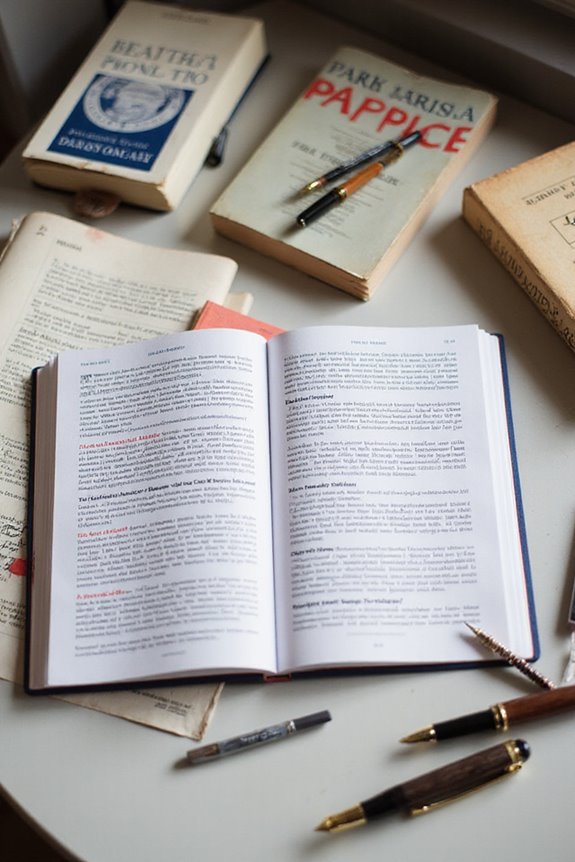
Effective copywriting techniques are essential for engaging voters and ensuring that campaign messages resonate. By employing audience segmentation, we can tailor our messaging to align with voter demographics, values, and core concerns. This approach allows us to craft language that evokes emotional resonance, fostering a deeper connection with potential supporters. Incorporating audience research helps us understand the key concerns that matter most to voters, enhancing the relevance of our messaging. Additionally, using eye-catching designs can significantly increase the effectiveness of our materials, making them more appealing to our audience.
Key strategies include:
- Using clear, direct headlines that capture attention.
- Structuring content with bullet points for easy reading and comprehension.
- Balancing emotional appeals with factual support to maintain credibility.
- Incorporating compelling calls to action that motivate voter engagement.
- Leveraging testimonials to build trust and social proof.
Importance of Visual Elements and Imagery
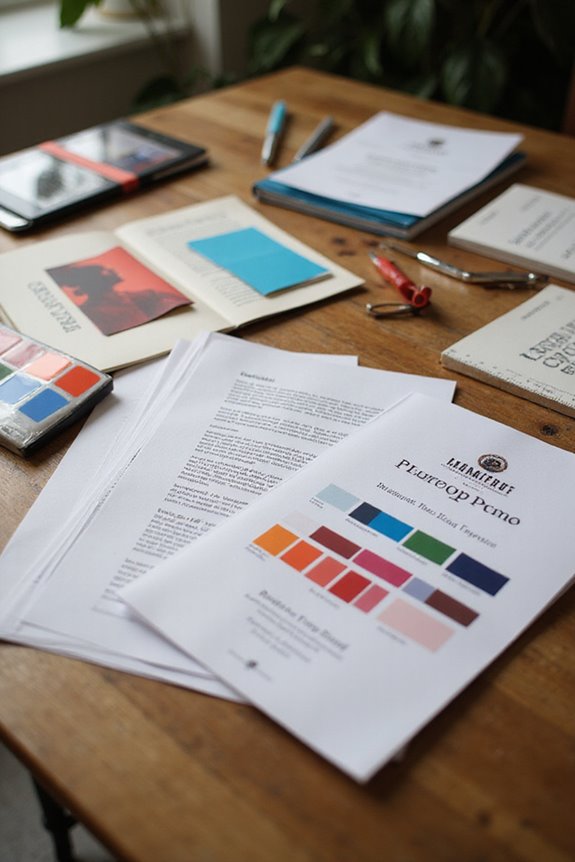
Visual elements and imagery play a significant role in how we communicate our campaign messages and engage our audience. Effective visual storytelling enhances our brochures by creating that vital first impression. Here’s why imagery relevance matters:
- High-quality visuals act as a “visual handshake,” encouraging deeper exploration of our content.
- Consistency in visual design builds trust and reinforces our brand identity.
- Purposeful imagery aligns with key value propositions, resonating with our target demographic.
- Clean icons and infographics simplify complex information, making it accessible for audiences to understand important issues.
- Avoiding generic visuals is essential; authentic, contextually relevant images foster connection.
- Choosing colors wisely improves readability and highlights calls to action.
- Including high-quality visuals ensures our message is not only seen but also understood.
Incorporating these elements guarantees our message is not only seen but also understood.
Best Practices for Mailer Dimensions and Formats
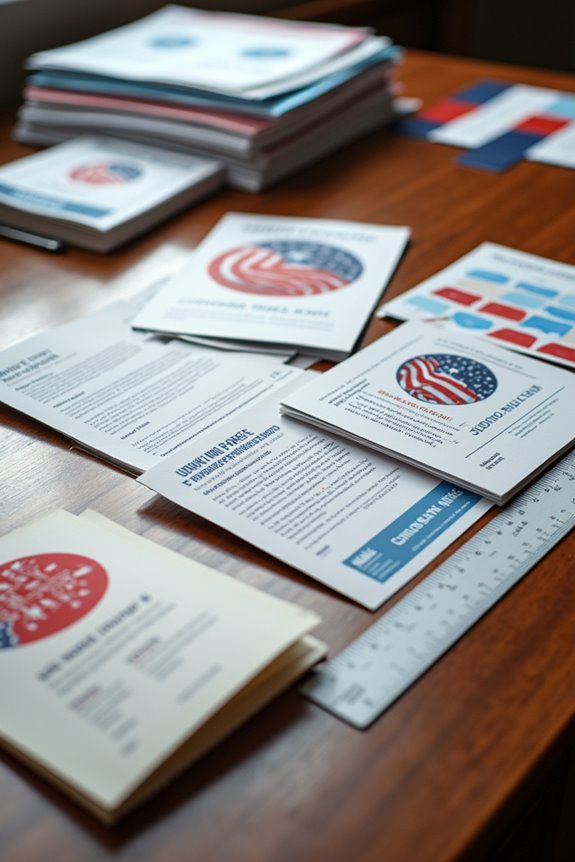
Choosing the right mailer dimensions and formats can greatly influence the effectiveness of our political brochures. Here are some best practices for mailer size selection and brochure format types:
- Standard Sizes: Use common sizes like 4”x6” or 6”x9” for efficient processing by USPS, minimizing costs and delays.
- Brochure Formats: Consider tri-fold or bi-fold options, which are practical for letter-size paper (8.5”x11”) and offer different panel layouts. Additionally, engaging layouts can enhance the visual appeal and capture the attention of the target audience’s beliefs.
- Content Space: Larger formats provide room for detailed messages, while smaller sizes are ideal for mass distribution at lower costs. This ensures that the brochures can accomplish tasks that flyers cannot, such as providing comprehensive details.
- Design Considerations: Verify dimensions with printers and guarantee folds maintain readability, enhancing overall presentation and effectiveness. Ensuring high-quality materials can also elevate the perceived value of the brochures, making them more impactful in conveying messages.
Essential Content Elements to Include
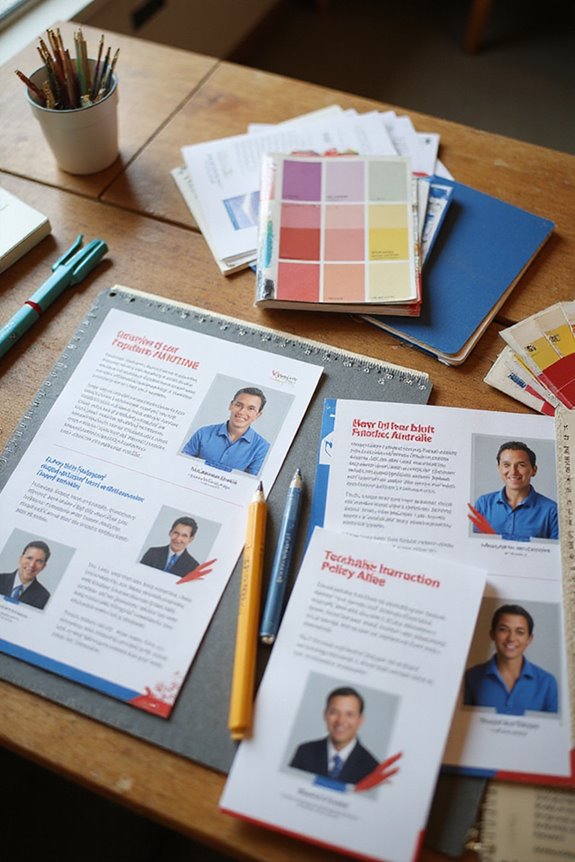
A well-structured political brochure should incorporate essential content elements that effectively communicate the candidate’s message and engage voters. Here’s what we need to include:
- Candidate Identification: Use a professional photo of the candidate for recognition and trust.
- Policy Highlights: Present key proposals in bulleted format for clarity.
- Clear Messaging: Open with a strong statement and limit paragraphs to one idea. Additionally, consider creating the brochure after raising 65% or more of your campaign goal to ensure it accurately reflects your objectives. Utilizing high-quality materials for printing can enhance the overall appeal of the brochure.
- Candidate Testimonials: Include endorsements to build credibility and persuasive support.
- Contact Details: Provide campaign website, social media, and engagement opportunities.
- Legal Information: guarantee compliance with authority lines and disclaimers.
Strategies for Positive Messaging
Positive messaging plays a pivotal role in engaging voters and shaping their perceptions of a candidate. To create effective strategies, we should focus on the following key elements:
- Optimistic Narratives: Highlighting a candidate’s strengths and future accomplishments can inspire excitement and participation among voters. Additionally, showcasing durability and quality in campaign materials can reinforce the candidate’s reliability.
- Authenticity: Voters trust consistent, genuine messaging that reflects a candidate’s true values and connects emotionally.
- Storytelling: Compelling narratives humanize candidates and showcase their vision for positive change, enhancing message credibility.
- Grassroots Connections: Engaging with the community through face-to-face interactions builds trust and reinforces positive messaging. Positive marketing emphasizes knowledge and experience, making these interactions even more impactful.
- Clarity and Repetition: Clear, concise messaging in brochures helps improve voter recall and comprehension, ensuring our core themes resonate effectively.
Utilizing Calls to Action Effectively
Effective calls to action (CTAs) are essential for engaging voters and prompting them to take the desired steps in support of a campaign. To maximize impact, we should use action-oriented language. Here are some effective strategies:
- Clear Verbs: Use concise verbs like “Join,” “Donate,” or “Register” to encourage immediate responses.
- Emotional Resonance: Integrate emotionally charged words, such as “Hero” or “Change Lives,” to enhance motivation.
- Urgency: Implement time-sensitive phrases like “Act Now” to stimulate prompt action.
- Visual Design: Guarantee CTAs are prominent and visually appealing, using contrasting colors for visibility. Visibility is crucial in ensuring that your CTAs catch the eye of potential supporters.
- Personalization: Tailor CTAs to resonate with specific audience segments, enhancing relevance and connection.
Enhancing Credibility With Data Presentation
When we present data in political brochures, clarity and accuracy are paramount for establishing credibility. Here are key considerations to enhance data presentation:
- Data Accuracy: Use verified statistics from trusted sources to guarantee reliability. This builds trust with our audience.
- Statistical Transparency: Clearly label all data points, including sources and methodologies. This invites scrutiny and supports credibility.
- Visual Elements: Incorporate charts and graphs to present data visually. This enhances comprehension and makes complex information more digestible. Additionally, be aware that annotations significantly influence viewer perceptions and can shape their conclusions.
- Consistency: Maintain uniform formatting for units and styles. This professionalism avoids confusion and reinforces our message.
- Avoid Misleading Representations: Confirm all data is presented clearly to prevent misconceptions, which can undermine our overall credibility.
Building Brand Recognition Through Consistent Design
Key benefits include:
- Brand Coherence: Aligning logos, fonts, and color schemes reinforces campaign messaging. Brochures can serve as silent salespeople, promoting brand recognition and engagement long after distribution.
- Emotional Connection: Strategic color choices evoke feelings that resonate with voters.
- Increased Recall: It typically takes 5 to 7 impressions for voters to remember a brand.
Frequently Asked Questions
How Can I Measure the Effectiveness of My Political Brochure?
Measuring our political brochure’s effectiveness can feel like catching lightning in a bottle! We should plunge into brochure analytics and gather audience feedback to understand impact, conversion rates, and how our message resonates.
What Printing Options Are Best for High-Quality Brochures?
When considering printing options for high-quality brochures, we’ve found that offset printing delivers superior detail for large runs, while digital printing offers quick turnarounds for smaller projects without compromising quality. Both methods have unique advantages.
How Often Should I Update My Political Brochure Design?
We should update our brochure frequency based on design trends and campaign developments. Regular reassessments guarantee our materials align with current messaging, keeping us relevant and engaging to voters throughout the election cycle.
Can I Use Humor in My Political Brochure?
Absolutely, we can use humor tactics in our political brochure. It enhances audience engagement, making our message more memorable and relatable. Just remember, humor should resonate with our target audience to be effective.
What Are Common Mistakes to Avoid When Designing a Brochure?
They say “less is more,” and when designing a brochure, we should prioritize clarity. Avoid excessive clutter in brochure layout, choose harmonious color choices, and guarantee our messaging remains concise to effectively engage our audience.

